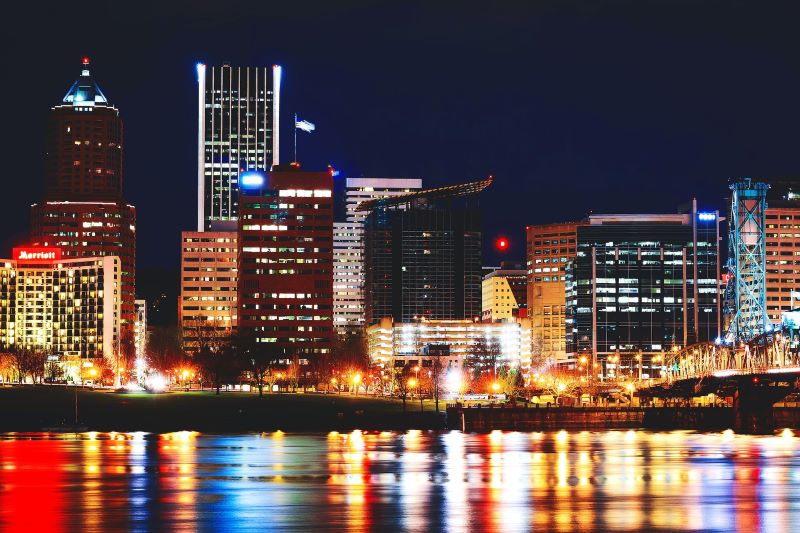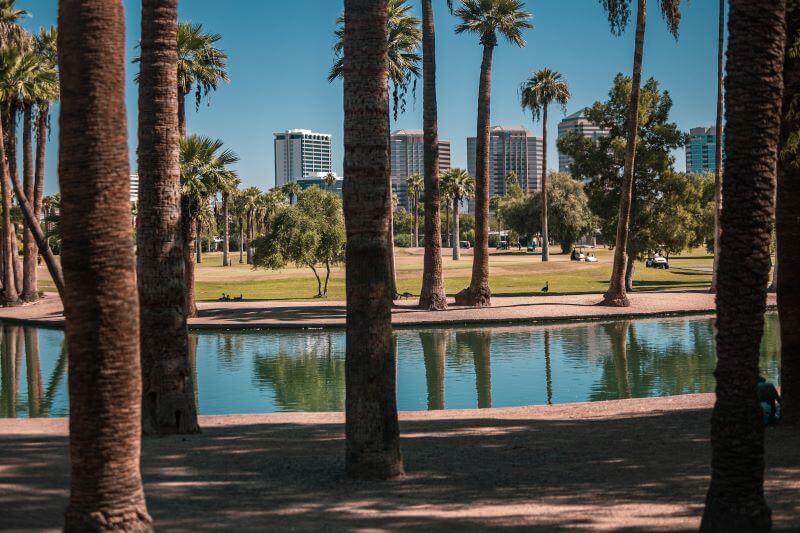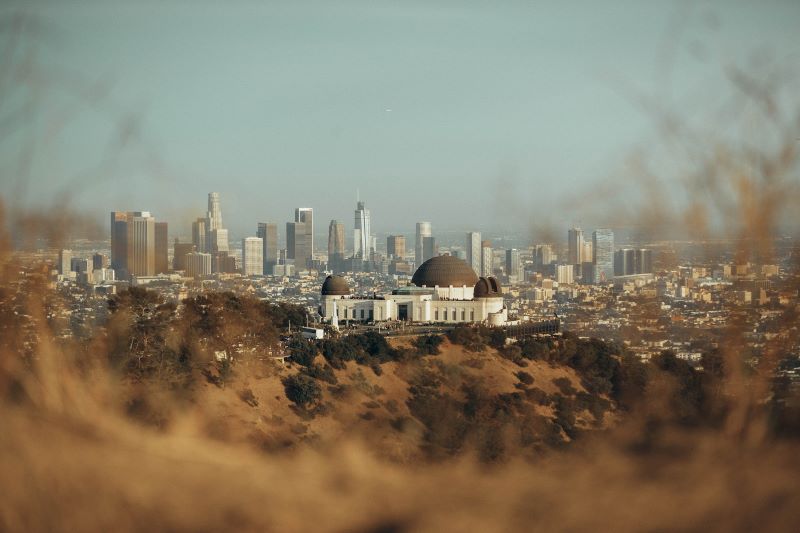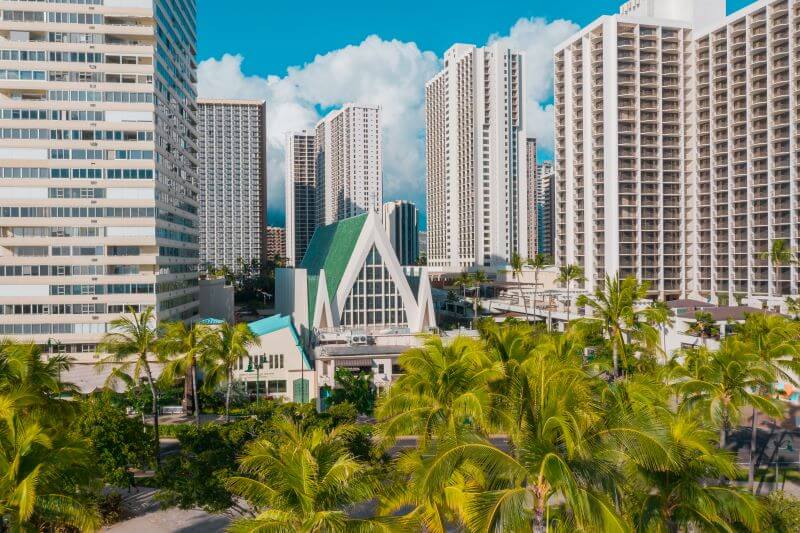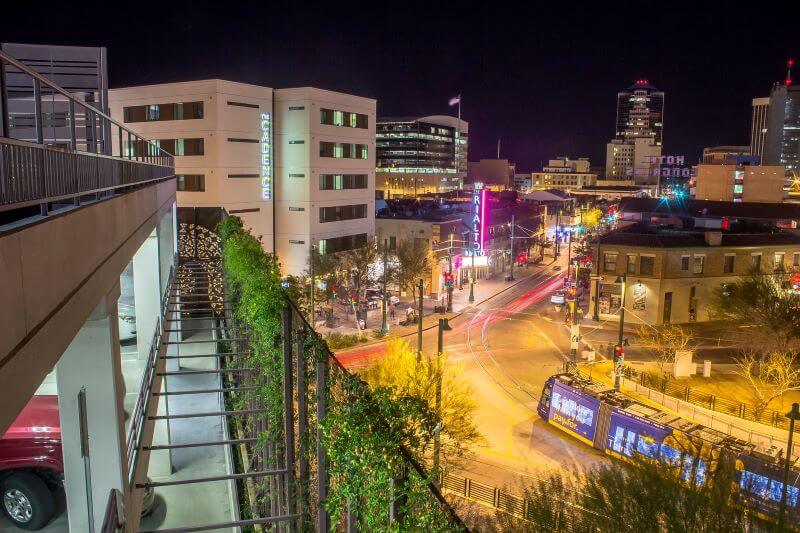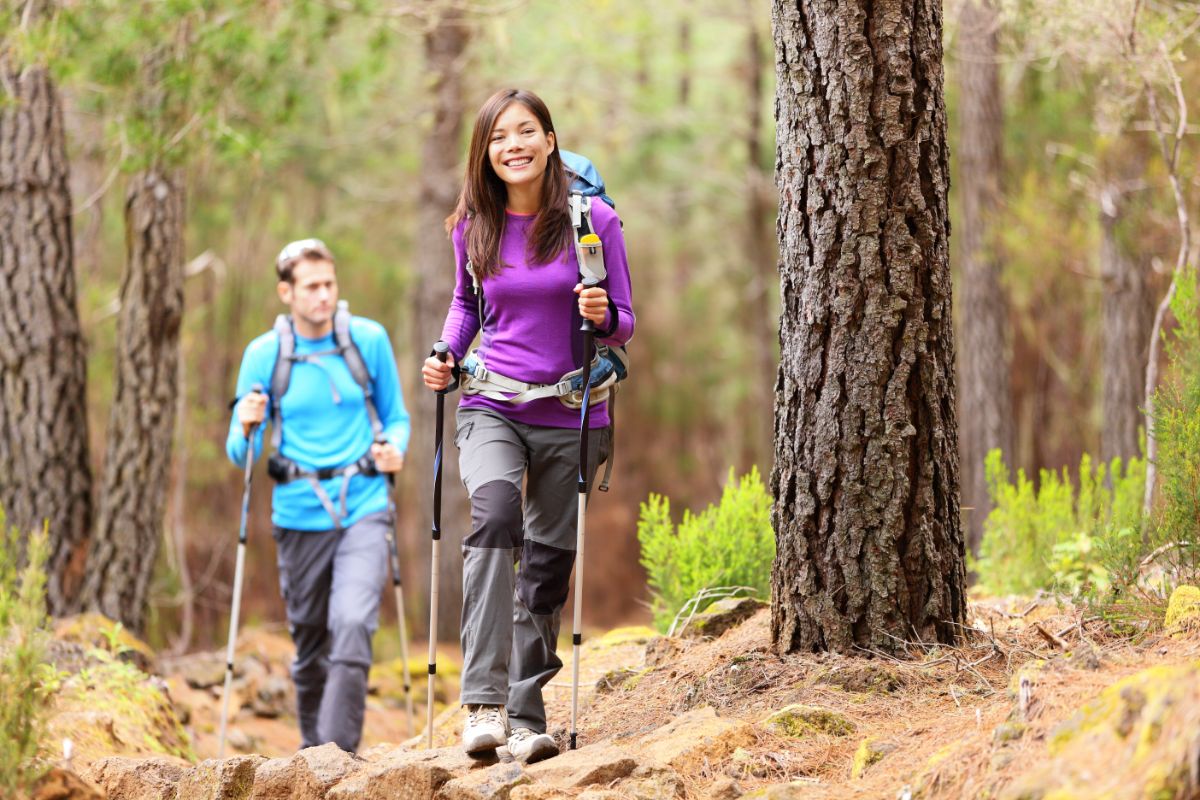
When someone tells you to take a hike, where are the best places to go?
To mark National Trails Day on June 3, LawnStarter ranked 2023’s Best Hiking Cities in the U.S.
We compared the 200 biggest U.S. cities based on five categories. We factored in hiking trail access and quality, climate, and safety, among 15 key indicators of hiker-friendliness.
Walk through the results of our ranking below. To learn how we ranked the cities, see our methodology.
Contents
- City Rankings + Infographic
- Top 5 Close Up
- Key Insights
- Ask the Experts
- Methodology
- Final Thoughts: Get Outside
City Rankings + Infographic
See how each city fared in our ranking:
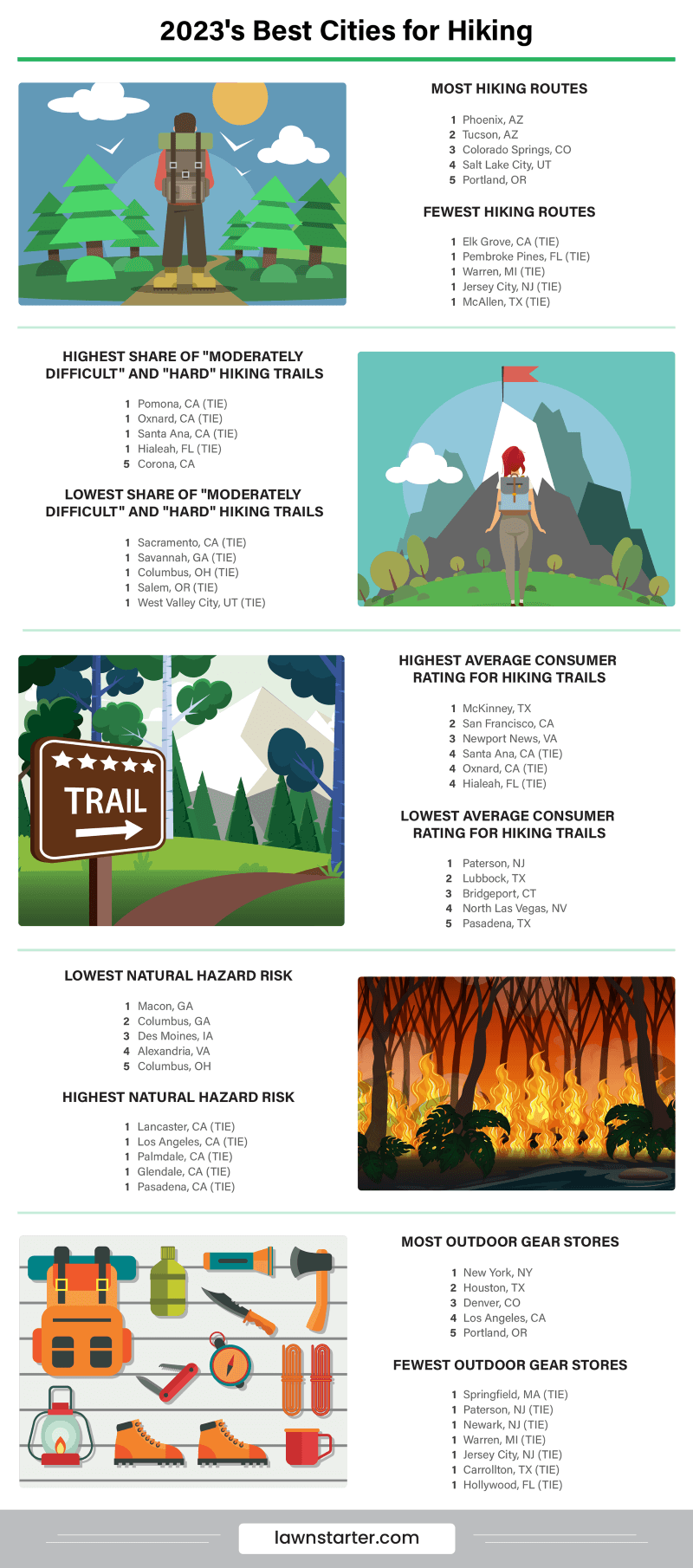
Top 5 Close Up
Check out the slideshow below for highlights on each of our top five cities.
Key Insights
The Gist
The West is clearly a hiker’s paradise. The region makes up our entire top five, such as Portland, Oregon (No. 1), Honolulu (No. 4), and Tucson, Arizona (No. 5). That’s also true of our entire top 20 if you count Colorado Springs, Colorado (No. 9) as part of the West.
On the other hand foot, Southern cities, such as Pasadena, Texas (No. 199), Mobile, Alabama (No. 196), and New Orleans (No. 193), finished at the bottom of our ranking. These cities were tripped up by lack of access to already low-rated trails and sweltering, humid climes. Jersey City, New Jersey, is the least hiker-friendly.
Standout Stats
- Trodding on the Competition: For the second year in a row, Portland, Oregon is our top hiking destination. No other city is more synonymous with the great outdoors. Stumptown earned its way to the top with high scores across four out of five categories, including top five rankings in Hiking Access and Supplies Access.
- East vs. West: When it comes to Hiking Access, Greater Phoenix is unmatched. Three cities from this metro area claimed top 25 spots in the category, including Phoenix (No. 2) in first place and much of the East Valley region — except Chandler (No. 180). By contrast, no West Valley city cracked the top 50%.
- Pleasant Paths: Besides offering impressive Hiking Access, Arizona cities elevate the hiking experience. Phoenix (No. 2), Tucson (No. 5), and Scottsdale (No. 28) — in that order — make up the top three of our Hiking Quality category. Two other Grand Canyon State cities — Glendale (No. 113) and Mesa (No. 65) — earned top 25 scores, as well.
- America’s Top 40: Of the 40 cities with the most hiker-friendly Climate, 35 are in California, including Santa Rosa (No. 14) in first place. Honolulu (No. 4) took the No. 2 spot. Lubbock, Texas (No. 152), Portland, Oregon (No. 1), Vancouver, Washington (No. 106), and Tucson, Arizona (No. 5) round out the five outliers.
- Tough Treks: Serious hikers will find the most challenging trails in Greater Los Angeles. Eight of the 10 cities with the highest percentages of “moderately difficult” and “hard” hiking trails are located in this metro area. They include cities like Oxnard (No. 24), Corona (No. 43), and Palmdale (No. 37). Ironically, Los Angeles (No. 3) itself is not among them.
- Campground Zero: Among the 10 cities with the most campgrounds within 50 miles, only Springfield, Massachusetts (No. 81), represents a U.S. region other than the West. In fact, the aptly nicknamed City of Firsts came in first in campground access. Laredo, Texas (No. 128), finished last in this metric, with access to only one campground.
- High Praise: Out of the 200 cities we ranked, only Scottsdale, Arizona (No. 28), earned top 10 scores across all consumer satisfaction metrics. It boasts the 7th-highest average consumer rating for hiking trails, the 8th-highest number of top-rated trails, and the 10th-highest average number of reviews per trail.
- Deadly Walks: Sin City can be lethal for trekkers who aren’t careful. The Las Vegas metro area — Henderson (No. 112), Las Vegas (No. 16), and North Las Vegas (No. 194) — registered the highest natural and environmental death rate in our ranking. Extreme heat, rattlesnakes, and slippery rocks are some of the most common hiking hazards in the area.
Ask The Experts
While anyone can set out on a trail, hiking can be more complicated than you might expect. Our panel of outdoor experts can help boost your confidence. Read their thoughts and tips below.
- According to the American Hiking Society, “1 in 4 people don’t live within walking distance of a park or other outdoor recreation space.” What accounts for this outsized lack of access?
- Considering the health and social benefits of hiking, how can local governments encourage more of their residents to explore the outdoors?
- What are some of your best tips for novice hikers?




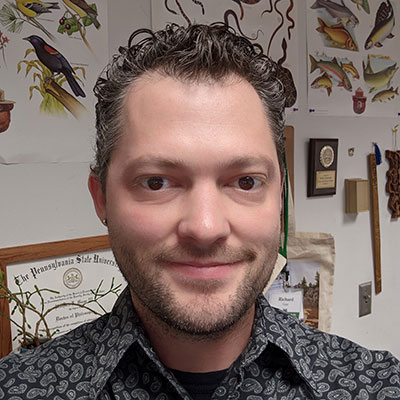
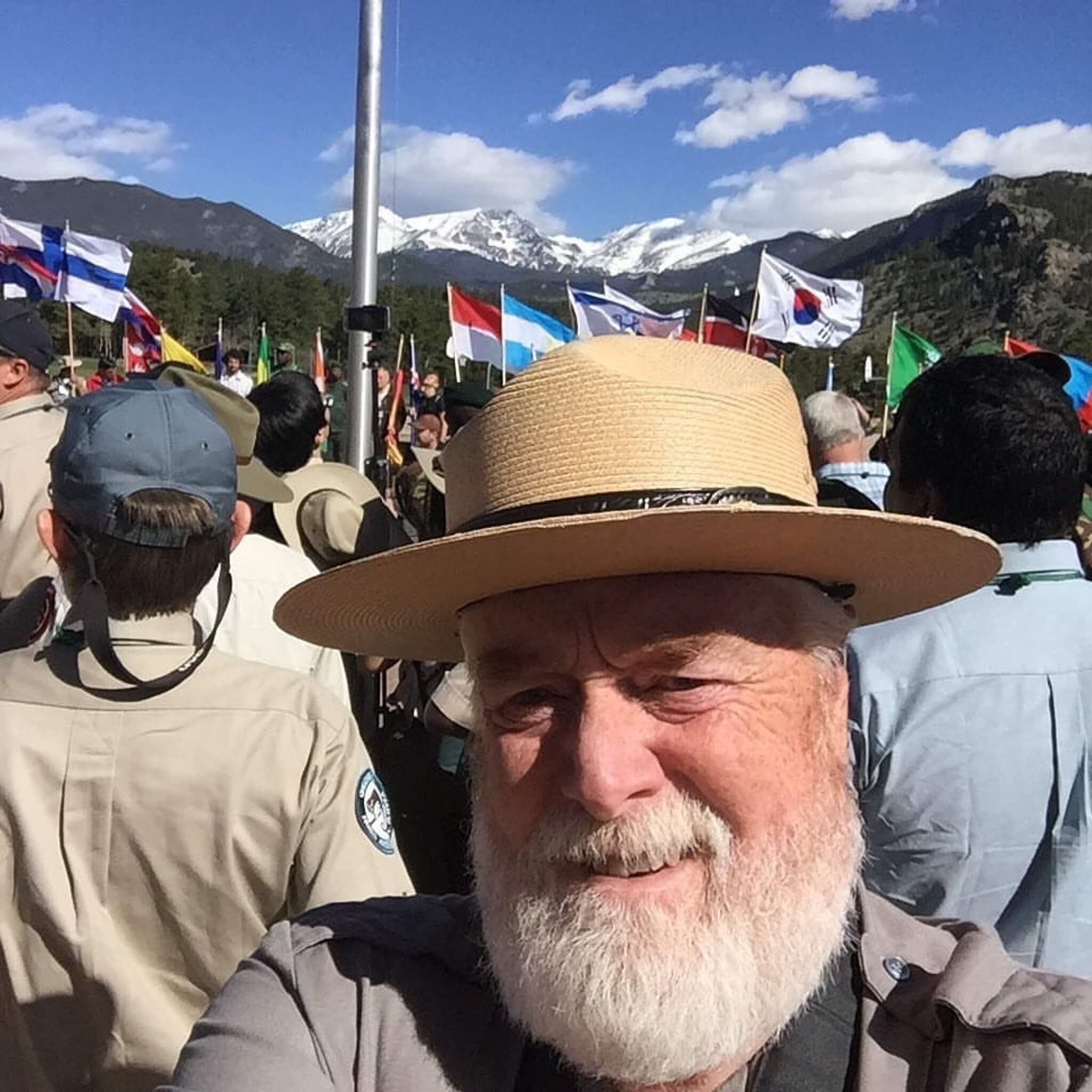



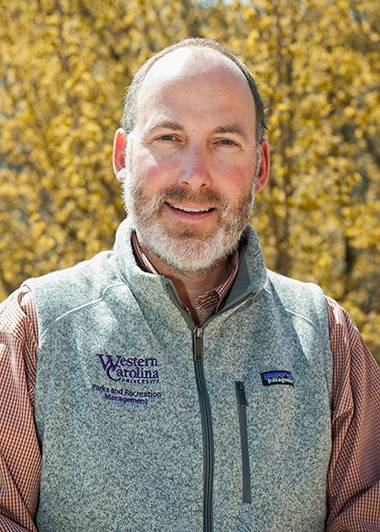


According to the American Hiking Society, “1 in 4 people don’t live within walking distance of a park or other outdoor recreation space.” What accounts for this outsized lack of access?
Almost by definition, as population density goes up, the amount of green space goes down, so it makes sense that many people live in areas with little access to green space.
Considering the health and social benefits of hiking, how can local governments encourage more of their residents to explore the outdoors?
Local governments would be well advised to stress outdoor activities for their residents and actively promote opportunities to hike.
What are some of your best tips for novice hikers?
As a semi-novice hiker myself, the first thing I recommend is to find decent shoes, and secondly, make sure you stretch! Hiking is more than walking – rougher terrain, inclines and declines, and loose soil or gravel all introduce new challenges beyond simply walking through the neighborhood.
Additionally, consider any health issues you have, and check with your primary care physician if you have any condition that might impact your ability to engage in hiking or other physical activities.
Also, start slowly, and find someplace that is a) easier to traverse for a beginner, and b) aesthetically beautiful. Exposure to green space is not only a safer way to interact during the pandemic; there is a growing body of literature that exposure to green space and “forest bathing” are measurably beneficial for the relief of stress. (See our paper, “The relationship between self-reported exposure to greenspace and human stress in Baltimore, MD”.)

According to the American Hiking Society, “1 in 4 people don’t live within walking distance of a park or other outdoor recreation space.” What accounts for this outsized lack of access?
The cost of land and the lack of foresight by city governments to put in some sort of ordinance that requires developers to put aside a section of parkland.
Considering the health and social benefits of hiking, how can local governments encourage more of their residents to explore the outdoors?
Market the trails and provide on-line maps of the various trails in the area.
What are some of your best tips for novice hikers?
1. Get some good hiking shoes.
2. Find a comfortable way to carry water.
3. Use a hiking stick. It really helps for going up and down steep areas.

According to the American Hiking Society, “1 in 4 people don’t live within walking distance of a park or other outdoor recreation space.” What accounts for this outsized lack of access?
Phoenix, Arizona, Maricopa County specifically, and Arizona in general are blessed with hundreds of miles of accessible public hiking and park-friendly walking trails for outdoor enthusiasts. Phoenix alone has over 40,000 acres of public parks, mountain parks, and trails — most within walking, biking, or a short driving distance of neighborhoods.
Urban planners need to be acutely aware of the need for accessible (able-bodied as well as disabled populations) public park and nature-driven trails: hiking, biking, and walking. Hiking replaced golf as the most popular outdoor recreational pursuit.
Considering the health and social benefits of hiking, how can local governments encourage more of their residents to explore the outdoors?
Local park and recreation agencies need to be up to date with websites and social media outlets in order to provide positive messaging to users. Locally elected and appointed officials can be engaged to help promote safe and healthy lifestyles in parks and trails.
What are some of your best tips for novice hikers?
This is important.
1. Remind and enforce new hikers to “stay on marked trails” and not venture into fragile natural areas.
2. “Leave no trace” practices must be practiced.
3. Dogs must be kept on a leash so as to maximize the safety of other hikers, wildlife, and fauna.
4. Respect and be courteous to other hikers, bikers, and walkers to ensure a quality and healthy experience.
5. Nature does not close!

According to the American Hiking Society, “1 in 4 people don’t live within walking distance of a park or other outdoor recreation space.” What accounts for this outsized lack of access?
It’s well documented that there is a gap in the access to outdoor recreation in general that falls strongly along both socioeconomic lines.
Not only is the physical access to spaces limiting equal access, but also many other factors. These same groups often see limited financial resources to purchase the equipment required for so many outdoor recreation activities.
We also know there is a gap in the free time that different groups have to participate in outdoor recreation. There is a ton of discussion and work being done by the greater outdoor industry to better diversify the outdoors and to make the outdoors for everyone. Getting the benefits of being outside doesn’t require a backpack or a mountain bike or a national park.
Considering the health and social benefits of hiking, how can local governments encourage more of their residents to explore the outdoors?
We need to better define the “the outdoors.” In many ways, the pandemic has done that for many — possibly without them knowing it.
As I said, it doesn’t have to be a week-long backpacking trip. People are walking around their neighborhoods and gathering in their yards around a fire. There are a lot of green spaces in our communities that we have just driven by all these years. Grab a water bottle, and go see what you can find.
You can also hike under the moon, put on a headlamp, walk in the rain, walk in the snow. Try something different. Communities can also provide education on the spaces they have available but also ideas of how residents can use those spaces. Geocaching, hiking, picnic shelters, bike/walking paths — they all get people outside.
What are some of your best tips for novice hikers?
1. Learn to turn it off and simplify, even if for only 20 minutes. Put your phone away, take off your headphones, and let your mind relax and wander.
2. Absorb the little sensory experiences happening all around you, even in your neighborhood. Smell wood burning from a home, or hear a child playing in the yard, the leaves under your feet, birds in the trees.
If you go out to a state park, try to do all of this for a few hours. So few of us put our normal life on the shelf for a few hours and just unwind.
3. Explore a small park near your home.
4. Walk to the store instead of driving.
5. While on a hike, don’t let it be about the speed or the distance or any metric at all. It’s not about checking the box — it’s about being outside. Stop and sit by a stream or even take a nap on the ground.
6. Lose track of time if you can. If you can get there, you are truly reaping the benefits of the outdoors.

According to the American Hiking Society, “1 in 4 people don’t live within walking distance of a park or other outdoor recreation space.” What accounts for this outsized lack of access?
This is a really complex problem with a lot of contributing factors, but I think one major issue is the lack of funding and support for public parks and recreation. For decades, budgets have been cut for these services while demand and usage levels have continued to rise.
Agencies are constantly being asked to do more with less, which has put a strain on local, state, and federal management agencies as well as non-profit organizations that manage land for outdoor recreation. This has led to enormous maintenance backlogs, reductions in staff and programs, fewer new projects, and even park closings and/or privatizations.
Often, these things disproportionately impact people at the lower end of the socio-economic spectrum who are most in need of these services. Agencies are forced to focus their limited resources in areas where they are likely to have the biggest impact (i.e. redirecting funding from outdoor spaces to a high-traffic community center, focusing more on sports facilities and playgrounds that serve a wide audience rather than hiking trails and wildlife viewing areas that attract a smaller crowd).
I think a lot of this stems from how we tend to view outdoor recreation and parks. When compared to other public services like police departments, schools, roads, and public health, recreation is not viewed as an essential service. However, studies have consistently shown that well-managed parks and outdoor spaces contribute positively to physical and mental health in the community, enhance the local economy, reduce crime and delinquent behavior, promote sustainability and responsible living, and a wide range of other benefits.
Considering the health and social benefits of hiking, how can local governments encourage more of their residents to explore the outdoors?
Local parks and recreation agencies need to provide opportunities for a wide range of recreational experiences and to inform the public about what is available.
I think there’s a misconception that hiking is for a particular type of person. However, agencies often have facilities that provide a range of options for all sorts of different users. Here in Huntington, West Virginia, for example, Ritter Park has a fantastic jogging/biking path that is well maintained and accessible to people of all ability levels. It’s very popular among fitness enthusiasts (running, jogging, biking, etc.) but also attracts casual walkers, wildlife viewers, dog walkers, and many other users. This is a great resource, but it is very much a front-country trail.
However, there are also lots of more rugged trails through the forests and hills behind the more developed part of the park. I’m always shocked at how few people know about these other trails that are available. Huntington residents looking for more of a backcountry experience may think that they have to leave town to find it, but we have a great resource right in our own backyard.
I think the local parks department could do a better job of informing people about the whole range of opportunities available. There’s something for everyone if you just know where to look.
What are some of your best tips for novice hikers?
1. If you’re new to hiking, start slow, and don’t be intimidated. There’s no way to do it wrong. It’s an activity that just about anyone can do and enjoy.
2. Many cities even have specially designed trails for people with limited mobility or other disabilities. In Huntington, there is an accessible nature trail behind the Huntington Museum of Art and miles of ADA-compliant walking paths throughout the city.
3. Prepare for your trip ahead of time, and make sure that you bring everything you’ll need for the trip (water, snacks, rain protection, etc.).
4. If your first experience is not positive, try something else. Don’t give up. Not all trails are the same. Look for something you’ll enjoy.
5. If you want to see wildlife, consider hiking in an area where there are fewer people. If you’re uncomfortable being alone in the woods, look for a trail through a more developed park or neighborhood.
6. Be sure to pay attention to trail difficulty before setting out. If you are not prepared mentally or physically for a difficult hike, you’re likely to have a bad experience. Begin with something you know you can handle and work up from there.
7. Finally, hiking can be a great social activity. It’s an excellent way to bond with friends or family members while getting some exercise and fresh air.

According to the American Hiking Society, “1 in 4 people don’t live within walking distance of a park or other outdoor recreation space.” What accounts for this outsized lack of access?
This is a challenging question with many answers, none of them particularly easy to discern.
That said, it essentially comes down to systemic inequities in the United States. Many of the “1 in 4” who do not live within walking distance of a park or other outdoor recreation site are people of color and/or those in lower-income categories. This is likely a result of systemic racism in the United States, whether it is overt as was common in the past or a result of poor or insufficient infrastructure and an inadequate tax base to support the establishment of parks and outdoor recreation sites in those disenfranchised communities.
Even if there are parks that are accessible, people of color and those in lower-income categories are less prone to visit parks than those in the dominant group (white, well-educated, higher income). Barriers include costs of an overall visit, perceptions regarding safety, and an expressed sense of not feeling welcome.
These inequities must be addressed through partnership, cultural competence, and literally changing the face of park professionals. Representation matters.
Considering the health and social benefits of hiking, how can local governments encourage more of their residents to explore the outdoors?
Local governments need to understand that the health and social benefits of hiking, spending time outdoors is part of their long-term public health strategy. Therefore, they need to abandon concerns of short-term gain afforded by less desirable activities.
Creating parks and providing equitable access to them is an investment in a healthy future for community residents and guests. This cannot be done alone. Local governments need to work in close and open partnership with local medical facilities and organizations, local outdoor industries, colleges and universities, K-12 schools, communities of faith, neighborhood organizations, citizen activists, and others to ensure equitable creation of and access to parks.
Local governments need to understand that these partnerships require them to do a lot of listening rather than prescriptive action.
What are some of your best tips for novice hikers?
There are many organizations currently creating safe spaces for marginalized individuals in the world of hiking and the outdoors. There is an amazing social media presence for many of these groups, particularly on Instagram.
I encourage folks interested in getting involved to find an affinity group. Some of my favorite examples are:
- Unlikely Hikers
- Outdoor Afro
- Latino Outdoors
- Disabled Hikers
- Brown Girl Outdoor World
- LGBT Outdoors

According to the American Hiking Society, “1 in 4 people don’t live within walking distance of a park or other outdoor recreation space.” What accounts for this outsized lack of access?
I’m not sure if I agree with this. If you are hoping to exercise, everyone is within walking distance. The City of St. George/Washington does a great job providing schools and parks to recreate.
Considering the health and social benefits of hiking, how can local governments encourage more of their residents to explore the outdoors?
As an avid hiker, the government aka park services do a fantastic job providing trails, maps and education for residents to take advantage of the outdoors. Fees could be a barrier to entry, but my opinion is that the population is sufficiently motivated.
What are some of your best tips for novice hikers?
1. Bring water and snacks.
2. Take your time — enjoy the path.
3. Don’t be overly ambitious: Start with shorter hikes then progress to longer ones.
4. Wear appropriate clothing and shoes.
5. Go with someone.

According to the American Hiking Society, “1 in 4 people don’t live within walking distance of a park or other outdoor recreation space.” What accounts for this outsized lack of access?
In general, the lack of access to parks or other outdoor recreation space is centered in the history of land development.
For a long time, parks and other recreation spaces simply weren’t valued by developers and therefore were overlooked as essential to the well-being of a community. Luckily in the last few decades, public green spaces have a resurgence in importance and are now being developed in many communities that did not have them before.
Community parks and recreation programs are now recognizing areas where access to places may be limited and are often doing outreach programs to these areas to try to develop relationships with the residents in order to help develop these spaces.
Considering the health and social benefits of hiking, how can local governments encourage more of their residents to explore the outdoors?
The biggest way local governments can help their residents to explore the outdoors is to educate them on the opportunities that exist. Local governments at the town or county level often manage many of the outdoor spaces available to the residents.
Highlighting these spaces through social media campaigns is a great way to inform local residents about the many places that might be just around the corner from them. With the expansion of photo-based social media on platforms like Twitter and Instagram, individuals are often found taking photos of the places they are exploring and sharing them. Local land management agencies can leverage these photographers, giving them a place to showcase their work while also utilizing that work to promote and educate about these outdoor spaces.
What are some of your best tips for novice hikers?
For those going out to hike for the first time, there are some basic tips that will make sure your first experience hiking isn’t your last.
1. Dress for the weather. Layers are your best friend to help you be comfortable while hiking. A few different layers with a wind- and waterproof jacket over the top will let you mix and match as you hike, to keep yourself at a comfortable temperature rather than relying on a heavy jacket to keep you warm but leaving you freezing if you feel the need to take it off.
2. Bring water and snacks. Hiking, depending on where you are going, can be much more strenuous than your typical walk around the block. Bring a couple of bottles of water and some easily portable snacks such as granola bars or some trail mix with you to keep yourself hydrated and keep your energy up.
3. Make sure you let someone know where you are going. Having a cell phone with you is always a helpful tool, but you also want to make sure that you inform someone else where you are going just for safety. Even as someone who has been going into the outdoors regularly for almost two decades now, I never go out without telling someone where I am going to be. So far it hasn’t been a backup plan I’ve had to use, but I always want it to be there just in case.

According to the American Hiking Society, “1 in 4 people don’t live within walking distance of a park or other outdoor recreation space.” What accounts for this outsized lack of access?
In urban areas, parks and green spaces may be spread out such that not all residents live within a reasonable walking distance (say, a 10-minute walk). In suburban and rural areas, while parks and recreation areas might be available communities may not be “walkable.” For example, many rural and suburban communities do not have sidewalks and walking to a park might mean walking along the side of a busy road.
Common barriers to access to outdoor recreation and green space include physical barriers such as infrastructure and community planning; lack of transportation (either personal or public); limited financial resources; and social influences including lack of awareness/education, history of exclusion from outdoor spaces, or not having experienced family or friends to introduce you to outdoor activities.
Considering the health and social benefits of hiking, how can local governments encourage more of their residents to explore the outdoors?
Funding recreation and leisure departments and providing facilities like parks and trails is a great way for local governments to facilitate outdoor experiences for their residents.
Local governments can also partner with other community organizations like schools, non-profits, and state and federal agencies to promote outdoor recreation. Recent campaigns like “Find Your Park” and “Opt Outside” have helped people get out and explore local parks and recreation areas. The national ParkRx organization provides a blueprint for local communities to engage healthcare providers and others in promoting outdoor recreation for health.
What are some of your best tips for novice hikers?
1. Do your research. Know what trail you’re going to do (and have a back-up option, just in case), local conditions and regulations — like trail closures, if you need a permit, etc. — and the weather forecast. Planning ahead and being prepared will help you stay safe and make the most of your time outside.
2. Commit to minimizing your impact. With so many people heading outside right now, we want to do our best to take care of our parks and recreation areas. Check out resources from the Leave No Trace Center for Outdoor Ethics for simple ways you can protect these special places while having a good time.
3. Start out by exploring your local parks and trails, and build up from there. Staying close to home reduces travel time, making it easier to fit outdoor time into your schedule and giving you more time on the trail to build your experience. Check out your community’s parks and recreation department website to find information about local parks, trails, and recreation areas.
4. Enjoy the journey. It’s easy to get caught up in thinking about the destination, but hiking is all about the experiences you have along the way. Take time to notice the little things. Unplug and engage all your senses along the trail. Hiking gives you the chance to rejuvenate your mind and body and reconnect with nature.

According to the American Hiking Society, “1 in 4 people don’t live within walking distance of a park or other outdoor recreation space.” What accounts for this outsized lack of access?
There are many factors that impact geographic access to parks and other outdoor recreation spaces. The “urban sprawl” that the United States has experienced in recent decades has resulted in greater distances between one’s place of residence and outdoor recreation spaces.
Considering the health and social benefits of hiking, how can local governments encourage more of their residents to explore the outdoors?
Currently, the issue is not a lack of outdoor exploration and recreation but overuse in many public areas. Local governments can continue to educate residents and visitors about the variety of public outdoor recreation resources nearby, appropriate safety protocols, and minimum impact practices like those shared through the Leave No Trace Center for Outdoor Ethics and their recent COVID-19 related research project.
What are some of your best tips for novice hikers?
See the Leave No Trace Center for Outdoor Ethics resources for getting outdoors during the pandemic. Also:
1. Conduct basic research into the area(s) you plan to visit
2. Consider local protocols for minimizing environmental and aesthetic impacts.
3. Be conservative in your route selection (distance and terrain).
4. Be sure you are prepared (see the Day Hikers Ten Essentials).

According to the American Hiking Society, “1 in 4 people don’t live within walking distance of a park or other outdoor recreation space.” What accounts for this outsized lack of access?
I would suspect this mirrors the number of people who live in cory and rural areas. One trend that has helped access one to a recreation space is the rail trail movement-converting deserted railroad tracks to recreational paths. The High Line in New York City is a great example.
Considering the health and social benefits of hiking, how can local governments encourage more of their residents to explore the outdoors?
Local governments along with the collaborations of the private sector to develop places to hike as well as educational programs impact the sheer numbers of people taking advantage of hiking for exercise and health.
What are some of your best tips for novice hikers?
1. There is a lot more information that can be accessed on the internet, including descriptions of trails, the location of trail headers, and trail maps. Study your route.
2. Hike in small groups.
3. Bring your bear spray.
4. Water is critical.
5. Make sure you are dressed in layers and prepared for many variables.
Methodology
First, we determined the factors (metrics) that are most relevant to rank the Best Cities for Hiking. We then assigned a weight to each factor based on its importance and grouped those factors into five categories: Hiking Access, Hiking Quality, Supplies Access, Climate, and Safety. The categories, factors, and their weights are listed in the table below.
For each of the 200 biggest U.S. cities, we then gathered data on each factor from the sources listed below the table.
Finally, we calculated scores (out of 100 points) for each city to determine its rank in each factor, each category, and overall. A city’s Overall Score is the average of its scores across all factors and categories. The highest Overall Score ranked “Best” (No. 1) and the lowest “Worst” (No. 200). Note: The “Worst” among individual factors may not be No. 200 due to ties.
Sources: AllTrails, Centers for Disease Control and Prevention, National Center for Disaster Preparedness, National Oceanic and Atmospheric Administration, NeighborhoodScout, ReserveAmerica.com, U.S. Environmental Protection Agency, and Yelp
Final Thoughts: Get Outside
Fresh air, budding trees, and blooming wildflowers — getting out in the great outdoors does wonders for your body and mind. One Stanford University study found that even a 90-minute walk in a natural setting can decrease depression.
So, get off your couch and get out there. For inspiration, here are more top U.S. hiking destinations to add to your bucket list:
- New Mexico: Reach the sky in the Land of Enchantment by hiking Wheeler Peak, the state’s tallest summit.
- New York: Explore an actual castle in the clouds after reaching the top of Whiteface Mountain, one of 46 peaks in the Adirondacks.
- Texas: Stay on the lookout for black bears, mountain lions, and skunks if you climb one of four of the Lone Star State’s highest peaks at Guadalupe Mountains National Park.
- Virginia: Shenandoah National Park has more than 200 miles of woodland trails to explore in the Appalachian and Blue Ridge Mountains.
- Washington: Trek through rivers, forests, and meadows of wildflowers while escalating an active volcano with glaciated peaks at Mount Rainier National Park.
- West Virginia: Hike the Mountain State, and explore more than 20 miles of trails and hundreds of years of American history at Harper’s Ferry National Historic Park.
Is a mountain of yard chores trailing behind you? Hire a local LawnStarter pro to tackle them while you enjoy a peaceful walk in nature.
Media Resources
- High-resolution image of infographic
- High-resolution images of cities
- 2022’s Best Cities for Hiking ranking results
- 2021’s Best Cities for Hiking ranking results
Main Photo Credit: Shutterstock
Sav Maive contributed to this article.
